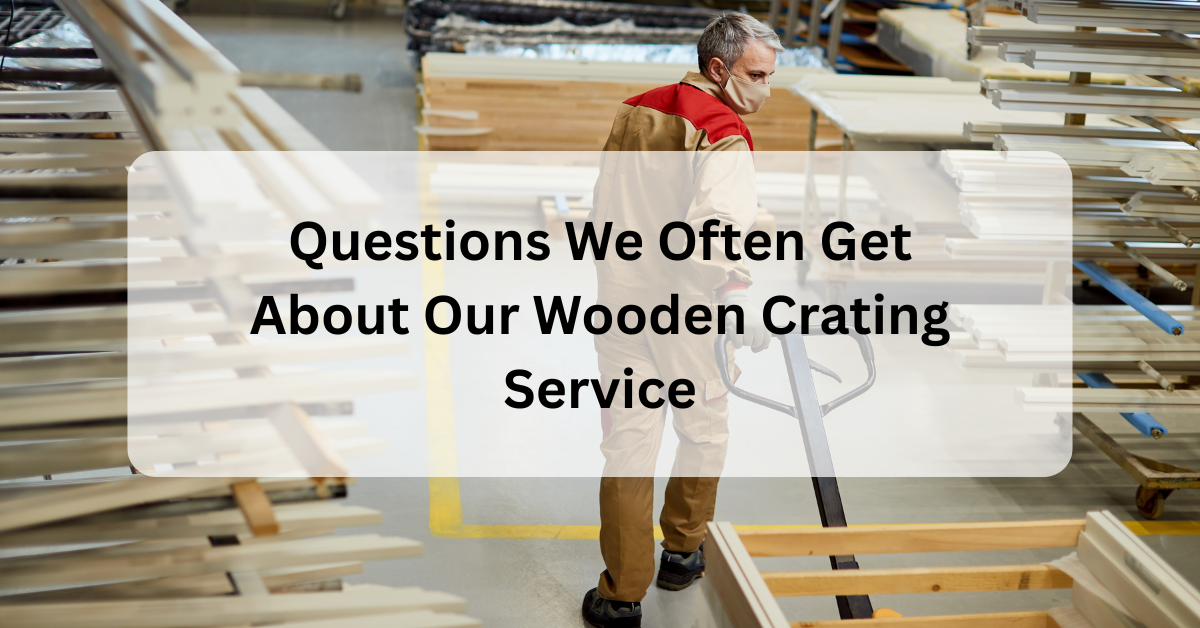At Kaibeng Singapore, we receive all sorts of questions from businesses looking to protect their machinery, electronics, or equipment during transport. Whether it’s a local relocation or an overseas shipment, proper packaging is crucial — and that’s where our wooden crating service comes in.
In this article, we’ve gathered some of the most frequently asked questions about our crating service, from materials and design to export regulations and collaboration with machine movers.
1. What Makes Wooden Crates Better Than Other Packaging Materials?
Wooden crates remain one of the most reliable packaging options for industrial and export use. Unlike cardboard or plastic containers, they provide superior strength, stackability, and protection against impact.
For heavy-duty applications — such as machine relocation or overseas freight — wooden crates absorb vibration and pressure, ensuring your cargo stays secure throughout transit.
Additionally, wood is eco-friendly and recyclable, aligning with Singapore’s push toward sustainability. Companies can refer to the National Environment Agency (NEA) for guidance on proper recycling and reuse of wooden packaging materials.
2. Are All Wooden Crates the Same?
Not at all. At Kaibeng, every wooden crate is custom-designed to fit the dimensions, weight, and sensitivity of your cargo.
For example, the packaging requirements for a fragile electronic component differ drastically from those for industrial machinery. We consider factors like:
- Weight distribution and load-bearing points
- Humidity resistance and internal cushioning
- Export requirements for ISPM-15 heat treatment
Our crating service ensures your shipment meets both safety and compliance standards — especially for clients exporting to countries with strict import controls.
3. Do I Need Heat Treatment for My Wooden Crate?
Yes, if your shipment is being exported. Heat treatment isn’t just an extra step — it’s a global requirement under ISPM-15, designed to prevent pest infestation in wooden packaging materials.
At Kaibeng, all export-grade crates and pallets undergo certified heat treatment to ensure smooth customs clearance and prevent shipment delays. Without this process, your goods risk being rejected or quarantined at international ports.
We also stamp every treated crate with a compliance mark, providing traceability and proof of certification.
4. Can You Work with My Machine Movers or Freight Forwarder?
Absolutely. We frequently collaborate with machine movers and logistics companies across Singapore. Our goal is to ensure that both the packaging and transportation processes are seamlessly aligned.
If you’re relocating machinery, our team can design custom crates that fit your mover’s lifting and securing specifications. This coordination minimizes the risk of vibration damage, misalignment, or shifting during relocation.
For international shipments, we can also liaise directly with your freight forwarder to ensure all export documentation and crate markings meet destination requirements.
5. How Long Does It Take to Build a Custom Wooden Crate?
The turnaround time depends on the complexity of your cargo and the quantity required. Generally, standard crate designs can be completed within a few working days.
However, for specialized industrial projects — such as large-scale machinery or multiple export containers — we recommend discussing your schedule in advance. Kaibeng’s production team can scale accordingly to meet tight shipping timelines.
Our efficient process and in-house fabrication facilities ensure that quality never compromises speed, giving businesses both flexibility and reliability.
6. Is Your Crating Service Suitable for Overseas Exports?
Yes — in fact, many of our clients use our wooden crates for export purposes.
Singapore’s tropical climate and humid conditions can affect wooden packaging if not treated properly. That’s why we apply moisture barriers, vapor wraps, and anti-rust desiccants to safeguard sensitive machinery and metal components.
Kaibeng’s wooden crates are engineered to withstand long-distance sea freight while complying with international export regulations. This makes them ideal for industries like manufacturing, oil & gas, precision engineering, and electronics.
7. Can Wooden Crates Be Reused or Recycled?
Definitely. Our wooden crates are designed for multiple uses — provided they’re handled and stored properly. Many businesses in Singapore have adopted reusable crate systems to cut down on packaging waste and costs.
When crates eventually reach the end of their lifespan, they can be recycled into pallets or repurposed for secondary storage. This not only reduces waste but also supports the country’s Zero Waste Masterplan — a national effort to make Singapore a more sustainable, resource-efficient economy.
Conclusion
From local factory relocations to global exports, Kaibeng Singapore has built a reputation for precision, reliability, and compliance in every crate we design.
Our crating service doesn’t just build boxes — it builds confidence. Each wooden crate is engineered to protect your investment, comply with global standards, and coordinate seamlessly with your logistics team or machine movers.
For tailored packaging solutions that meet the highest safety and export requirements, visit Kaibeng Singapore — your trusted partner in industrial wooden crate manufacturing and crating services.
